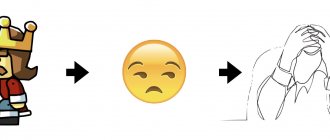Delirium is a disorder of the content of thinking with the appearance of painful ideas and concepts that distort reality. Attempts to dissuade, to prove the incorrectness of an incorrect statement only strengthens the syndrome. Delusions are characteristic of schizophrenia, schizoaffective disorder, bipolar disorder (in later stages of mania), as well as organic brain lesions.
There are many types of delusions: delusions of persecution, relationships, jealousy, damage, religious delusions, etc.
Forms and types of delirium
Even in antiquity, delirium was considered identical to madness. The perception of delirium as a form of madness has remained to this day, but already in the 19th century many scientists began to identify delirium as an independent disease .
Today, there is a division of delusional states depending on the cause of the disorder. There are two forms of delirium:
- Primary delirium . Occurs suddenly without previous diseases or disorders. The primary form is expressed in the emergence of a stable system of beliefs, the truth of which the patient is firmly convinced.
- Secondary delirium . It occurs against the background of other mental disorders and is characterized by inconsistency of beliefs and the appearance of hallucinations. Secondary delusions can be caused by several types of experiences: for example, a person suffering from hallucinations may have the idea that they are being haunted.
Note! Delirium is often a symptom of delirium, a state of insanity, along with visual hallucinations, psychomotor agitation, and other mental disorders.
Primary or interpretive delusion is the primary phase, the basis of which is an altered interpretation of real facts or personal feelings . It appears on its own. For a long time, the patient’s perception does not change, his performance is also preserved, but there is a tendency towards progression (more and more areas that surround the person are drawn into the system of delusional ideas) and systematization (ideas are clothed in a coherent system of evidence and the denial of facts that refute this delusional theory ).
This form includes a mild form of delusion - paranoid, and systematized paraphrenic delusion - a more severe form, when delusional states - delusions of grandeur and delusions of influence are brought to automatism and cause an increase in the emotional background.
Depending on the clinical picture, there are:
- Acute delirium . The patient's behavior is completely subordinated to a delusional idea. In the acute form, consciousness is completely subordinated to a delusional idea, the person does not control his behavior and loses the ability to critically assess what is happening.
- Encapsulated nonsense . A person maintains control over his behavior and is able to adequately evaluate and analyze facts that are not related to the topic of delirium. The patient retains partial clarity of thinking, the disorder occurs in a sluggish form.
Secondary delusions can be defined as sensual (delusions of perception) and figurative (delusions of representation). Arising as a result of disturbances, it can be expressed in the form of images and hallucinations, illusory perception in the form of insights.
Types of delirium
The plot of delirium, that is, its content, depends on various aspects (the cultural level of the patient, social status and psychological factors.
All types of delirium are divided, relative to the general plot can be divided into:
- delusion of persecution (the content of this delusion is always either persecution or causing some kind of harm intentionally).
- delusion of grandeur (delusion associated with exalting oneself, overestimating one’s omnipotence to an extreme degree.
- depressive delirium (occurs against the background of a depressive disorder, contains a confession of mistakes, imaginary sins, crimes, illnesses).
Stages of delirium formation
In psychiatry, there are 6 stages of the formation and development of primary delusions:
- Delusional mood . It is expressed in the belief that there are inevitable external changes, increased anxiety, often caused by a feeling of impending disaster.
- Delusional perception . A distorted perception of reality caused by a state of anxiety, leading to a distorted interpretation of external facts.
- Delusional interpretation . Distorted interpretation of facts or sensations caused by altered perceptions.
- Crystallization . Formation and acceptance of stable delusional ideas that logically fit into the patient’s worldview.
- Attenuation . Returning the ability to critically evaluate your own ideas and beliefs.
- Residual delirium . Residual manifestations that remain unchanged after the complete disappearance of other manifestations of delusional disorder and the restoration of a critical attitude towards one’s own behavior.
Secondary delusions are inconsistent and fragmentary.
Medical educational literature
This section provides information about syndromes with pronounced thinking disorders - obsessions, overvalued ideas, delusions.
The main content of obsessive-phobic syndrome is a wide range of obsessive phenomena. In addition to obsessive thoughts, obsessive fears (phobias) are very common, the content of which can be very different. With neuroses, fears are more common, logically understandable, closely related to events that pose a real danger: fears of pollution and infection (mysophobia) , closed spaces (claustrophobia), crowds and open areas (agorophobia), death (thanatophobia) . It is not uncommon to fear the occurrence of a dangerous disease (nosophobia) , for example, cardiophobia, cancerophobia, syphilophobia, speedophobia. With schizophrenia, in addition to the above options, very unusual fears divorced from reality may be observed: becoming infected with “cadaveric poison” from household items, fears that there will be needles and pins in the food, that household insects may crawl into the vagina.
The appearance of fears is closely related to symbolic protective actions taken to alleviate feelings of anxiety, at least temporarily getting rid of fear - rituals . Patients themselves establish a complex sequence of actions, usually quite absurd (“wash your hands 8 times with green soap and 2 times with blue soap”, “before entering the elevator, inhale and exhale deeply 2 times, and then rub your temples”). Understanding perfectly the senselessness of such actions, they are still forced to repeat them exactly to overcome fear. Distracted by others from the complex ritual, patients consider it necessary to start everything from the very beginning.
Obsessive-phobic syndrome is the main manifestation of obsessive-compulsive neurosis. It also occurs in neurosis-like (resembling neurosis) variants of the course of endogenous diseases (schizophrenia). In schizophrenia, obsessions are often a stage in the formation of more severe symptoms (delusions). Particularly abundant obsessions are observed with psychasthenia - one of the variants of psychopathy, accompanied by severe anxiety, suspiciousness and pedantry.
People talk about dysmorphomanic (dysmorphophobic) syndrome if the patient’s main experiences are focused on a possible physical defect or deformity, thoughts about which may represent a mild disorder (fears, obsessive and overvalued thoughts), reflecting a painful attitude towards a real, but insignificant defect ( slight fullness, barely noticeable facial asymmetry).
Often there are variants of delusional dysmorphomania, devoid of any real basis. In addition to the actual ideas of a physical disability, those suffering from body dysmorphomania, as a rule, have ideas of attitude (the feeling that everyone around them notices their defect, quietly laughs at them), and a melancholy background mood. They describe the constant desire of patients to look at themselves in the mirror in secret from others (“mirror symptom”), and a persistent refusal to participate in photography. Patients may insist on cosmetic surgery.
The patient is 16 years old, tall, of asthenic build, and has had a reserved character since childhood. Prefers solitary games. At about 12 years old, he told his parents that he wanted to be a crane operator. I studied the structure of a tower crane and built a model of it myself in my room. I decided that I didn’t have a strong enough physique for my chosen profession. I exercised and tried to eat as many high-calorie foods as possible. Over the past year I have gained 15 kg. I read that a significant increase in body weight is observed after castration, and persistently asked my parents to carry it out.
Body dysmorphomania syndrome is not nosologically specific. It usually occurs in adolescence and young adulthood, more often in girls. Delusional variants of the syndrome can be observed at the onset of schizophrenia. Close to dysmorphomania are the syndromes of anorexia nervosa and hypochondriacal, discussed in Chapter 12.
For differential diagnosis of psychoses, the exact syndromic characteristics of delirium, which can be a manifestation of many syndromes of psychotic disorders: clouding of consciousness (delirious, oneiric, twilight), affective (depressive and manic), psychoorganic, are of great importance. In this chapter we will look at a number of syndromes in which delusion is the leading disorder. It should be borne in mind that the mechanisms of formation and course of acute delusional psychosis and chronic delirium are significantly different.
The most striking example of acute delusional psychosis is the syndrome of acute sensory delusions, or acute paranoid, in which delusions develop quickly against the background of vivid emotional disorders (anxiety, confusion, fear, delight, bewilderment). A sudden change in the patient’s well-being is regarded by him as a manifestation of a catastrophe; all perception of the surrounding reality is subordinated to this powerful feeling. Illusions or hallucinations often occur; the patient hears his name in the conversation of passers-by. As a rule, delusions of attitude and staging are observed. The patient feels that those around him are hiding some important news from him. Objects of the environment look changed (derealization), the patient feels significant changes in himself (depersonalization) - this gives rise to the feeling that he is going crazy. Anxiety and restlessness do not allow the patient to sleep peacefully. He is excited, rushes around the house, cannot find a place for himself, and runs for his life.
Acute sensory delirium is a manifestation of any acute psychosis - intoxication and somatogenic, acute attack of schizophrenia, reactive (psychogenic) paranoid. The course of such psychosis is, as a rule, relatively favorable: in most cases it is possible to completely stop the psychotic attack.
Among all delusional syndromes, the Kandinsky-Clerambault syndrome of mental automatism has the greatest nosological specificity. Its components are pseudohallucinations (see section 4.2.2), mental automatism and delusions of influence.
Automatism refers to the patient’s alienation of his own mental acts, the feeling that some processes in his psyche occur automatically, against his will. G. Clerambault (1920) described 3 types of automatism:
- ideational (associative, mental) automatism , examples of which are the feeling of putting and taking away thoughts, outside interference in their flow, breaks (sperrung) and influxes of thoughts (mentism); the impression that the patient’s thoughts become known to others (a symptom of openness); silent repetition of the patient’s thoughts (“echo of thought”), violent inner speech. Verbal pseudohallucinations as a feeling of transmission of thoughts over a distance are also a manifestation of ideational automatism;
- sensory (senestopathic, sensual) automatism - a condition in which many unpleasant sensations in the body, sometimes fanciful, difficult to describe (senestopathies), and sometimes completely natural (heat, cold, pain, burning, sexual arousal, urge to urinate), seem “made” ", specially called. Gustatory and olfactory pseudohallucinations are thus variants of sensory automatism;
- motor (kinesthetic, motor) automatism - the illusion that some of the patient’s movements are performed against his will, caused by outside influence. It is interesting that some neurological symptoms due to the use of psychotropic drugs (drug-induced parkinsonism) by people with this type of automatism are sometimes considered not as a side effect of therapy, but as a sign of exposure. Patients may claim that the facial expressions that appear on their face (smiles or tears) are unnatural and forcefully caused. Forced speech (speech-motor pseudohallucinations) also refers to motor automatisms.
The phenomena of mental automatism usually strengthen a person in the idea that he no longer belongs to himself, serves only as a “toy in the hands of his pursuers” (a feeling of mastery), that his entire mental and physical life is controlled and controlled with the help of complex technical devices or hypnosis (delusion of influence) . Sometimes there is a suspicion that the influence of stalkers can damage internal organs, cause serious illness (cancer) or even sudden death.
A 28-year-old patient has been suffering from a mental illness since the age of 16, does not work, and is a disabled person of the 2nd group. Complains to doctors about psychomotor impotence. The appearance of this symptom is explained by the influence on him from a group of KGB workers using a “radio-electronic device consisting of a register and an emitter.” I am convinced that this device can influence almost all mental and physiological processes in his body: control movements, increase heart rate, cause the sensation of hot objects in his hands and even burns. He constantly hears in his head the voices of his pursuers, who allegedly together with him are developing a plan to capture the dangerous criminal Semenikhin. Left to his own devices, he talks aloud to the “voices” all the time. I am convinced that the darkening in the eyes that occurred during insulin comatose therapy is also caused by the action of the device.
The nosological specificity of Kandinsky-Clerambault syndrome has been repeatedly discussed in the scientific literature. Cases of the appearance of individual automatisms in intoxication and somatogenic diseases have been described, which does not allow us to consider this syndrome as pathognomonic for schizophrenia. In clinical practice, the appearance of this syndrome in most cases is associated precisely with schizophrenia, which is especially characterized by ideational automatisms, considered in the International Classification of Diseases ICD-10 as one of the most important signs of this disease (syndromes of the first rank by K. Schneider - see section 19.1) .
The dynamics of the development of chronic delirium were studied in detail by the French psychiatrist V. Magnan (1835-1916). Subsequently, the conditions he described were considered as manifestations of paranoid, paranoid and paraphrenic syndromes.
Paranoid syndrome is a primary interpretative delusion with a high degree of systematization, characterized by plots of persecution, jealousy, invention, and sometimes hypochondriacal delusions, litigious delusions, and material damage. There are no hallucinations in paranoid syndrome.
Delusional ideas are formed not on the basis of errors of perception, but as a result of a paralogical interpretation of the facts of reality. Often the manifestation of paranoid delusions is preceded by the long existence of overvalued ideas. Therefore, in the initial stages of the disease, such nonsense may give the impression of plausibility. The patient’s passion for a delusional idea is expressed by thoroughness and persistence in presenting the plot (“monologue symptom”). Paranoid syndrome tends to be chronic and difficult to treat with psychotropic drugs. It can occur not only in schizophrenia, but also in involutional psychoses, decompensations of paranoid psychopathy (see section 22.2.1). Some psychiatrists describe it as an independent disease (paranoia - see section 19.2). In schizophrenia, paranoid syndrome is prone to further development and transition to paranoid delusions.
A characteristic sign of paranoid syndrome is the presence of hallucinations (usually pseudohallucinations) along with systematized ideas of persecution. The occurrence of hallucinations determines the emergence of new plots of delirium - ideas of influence (less often poisoning). A sign of the supposedly carried out influence, from the point of view of patients, is a feeling of mastery (mental automatism). Thus, in its main manifestations, the paranoid syndrome coincides with the concept of the Kandinsky-Clerambault syndrome of mental automatism. The latter does not include only variants of the paranoid syndrome, accompanied by true taste and olfactory hallucinations and delusions of poisoning. With paranoid syndrome, there is a certain tendency towards the collapse of the delusional system, delirium acquires features of pretentiousness and absurdity. These features become especially pronounced during the transition to paraphrenic syndrome.
Paraphrenic syndrome is a condition characterized by a combination of fantastic, absurd ideas of grandeur, complacent or high spirits with mental automatism, delusions of influence and verbal pseudohallucinations. Thus, in most cases, paraphrenic syndrome can be considered as the final stage in the development of the syndrome of mental automatism. Patients are characterized not only by a fantastic interpretation of present events, but also by fictitious memories (confabulations). Patients show amazing tolerance to the supposed influence exerted on them, considering this a sign of their exclusivity and uniqueness. Statements lose their former harmony, and some patients experience a collapse of the delusional system. In paranoid schizophrenia, paraphrenic syndrome is the final stage of the course of psychosis. In organic diseases, paraphrenic delusions (delusions of grandeur) are usually combined with severe impairments of intelligence and memory. An example of paraphrenic delusion in an organic disease is the extremely ridiculous ideas of material wealth in patients with progressive paralysis (syphilitic meningoencephalitis).
A 54-year-old patient, a tractor driver, was suspended from work because he had lost all professional skills. When examined by a psychiatrist, he is complacent and calm, helpless when solving the simplest questions, and cannot name the month and year. He is not busy with anything in the department; at times he begins to sing songs or cry. When talking with a doctor, he stereotypically repeats that he owns a wonderful dacha in Sokolniki. He claims that the dacha is very tall - “a hundred floors”, “all the windows are made of crystal”, “there is a golden tractor in the yard.” The examination reveals dysarthria, Argyll Robertson's symptom, and a sharply positive Wasserman reaction (“four crosses”).
From the syndromes of chronic delirium described above, one should distinguish the formally similar to them, but developing acutely and proceeding more favorably, states of acute paranoia, acute paranoid and acute paraphrenia. They are characterized by a predominance of vivid emotional experiences, a low degree of systematization, a tendency to regression and, according to their main manifestations, correspond to the concept of acute sensory delirium. The extreme severity of the condition is also indicated by the appearance of signs of confusion ( oneiric syndrome - see section 10.2.3) at the height of the psychotic episode.
Variants of acute sensory delirium also include Capgras syndrome [Capgras Zh.M., 1923], the main symptom of which, in addition to anxiety and delirium of staging, is the symptom of doubles. A symptom of a negative double when the patient claims, for example, that a loved one visiting him in the hospital is not his father or mother, but is a well-made-up double of his real parents; and a symptom of a positive double, when the patient, on the contrary, recognizes in doctors or patients close relatives who have specially changed their appearance.
Fregoli's symptom is manifested by the conviction that the pursuers are constantly changing their appearance, while the patient tries to recognize them in any of the people who appear.
Delirium of intermetamorphosis involves changes not so much in appearance as in the inner essence of people and objects.
Cotard's syndrome, or delusion of denial [Cotard J., 1880], is closely associated with a severe feeling of melancholy and anxiety, manifested by megalomanic nihilistic hypochondriacal ideas. Patients are convinced that the consequences of a serious illness are so destructive for their body that “there is nothing left inside,” “the whole stomach is filled with fetid mucus,” “the insides have atrophied.” This is often accompanied by a strong feeling of guilt: the patient is supposedly “the world’s greatest sinner,” “a breeding ground for infection,” and he is awaiting punishment for his “crimes.” Most often, Cotard's syndrome develops at involutionary age.
BIBLIOGRAPHY
- Bleikher V.M. Thinking disorders. - Kyiv: Health, 1983. - 192 p.
- Dementieva N.F. Acute sensory delirium: Dis. ...Dr. med. Sci. - M., 1974. - 360 p.
- Zhislin S.G. About acute paranoids. - M.: NIIP, 1940. - 115 p.
- Zeigarnik B.V. Pathopsychology. — 2nd ed. - M.: Moscow State University Publishing House, 1986. - 240 p.
- Korkina M.V. Dysmorphomania in adolescence and adolescence. - M.: Medicine, 1984. - 224 p.
- Manyan V. Course of lectures on mental illness. Alcoholism. - M.: Zakat LLP, 1995. - 425 p.
- Ozeretskovsky D.S. Obsessive states. - M.: Medgiz, 1950. - 168 p.
- Rybalsky M.I. Rave. - M.: Medicine, 1993. - 368 p. Snezhnevsky A.V. General psychopathology. - Valdai, 1970. Terentyev E.I. Delirium of jealousy. - M.: Medicine, 1990. - 272 p. Bleuler E. Guide to psychiatry: Trans. with him. - Reprint edition, 1993. - 542 p.
If you find an error, please select a piece of text and press Ctrl+Enter.
Pages: 2
Symptoms and signs of delirium
The main symptom is the presence of false beliefs in the patient that cannot be corrected.
Note! Beliefs that appear as a result of a disorder, as a rule, are not characteristic of a patient in a healthy state. Often they are the complete opposite of a person's usual views.
Additional symptoms:
- Inability to concentrate, problems with remembering.
- Confused, incoherent speech.
- Disorientation in time and space.
Signs of delirium include:
- Increased anxiety, accompanied by ideas of persecution or outside influence on consciousness.
- The surrounding reality acquires a special, sometimes sacred meaning for the patient; everything that happens is interpreted according to the ideas that arise in the patient’s mind.
- Increasing mental and sometimes motor agitation.
- Registration of delusional ideas into a stable system, which is built on the internal logic of the patient.
- With secondary delusions, auditory and visual hallucinations may appear.
What is the reason
Why the aging psyche is more willing to build small-scale delusional constructions is still not very clear. There is a hypothesis that adaptive changes occur in her, as in the whole organism, and she, moving away from the troubled external environment, compensatoryly focuses on what is closer, more specific, more understandable. We see that the elderly limit their contacts and become less active. All that remains for him is himself, his surroundings, his immediate environment. And the delirium that forms under these conditions acquires a small scope.
We cannot say for sure whether delusions of harm appear more often in people who live in an unrelated environment, for example in a communal apartment, or in those who live in a normal family. There is no such data. The reasons may be different. For example, if a person develops dementia (and this certainly does not depend on the degree of love of those around him), his memory deteriorates, so he often forgets where he put things. He may suspect that someone took them. As similar problems arise daily, these ideas are confirmed. And then persistent delusional ideas of damage may appear.
Some symptoms reminiscent of delusions of harm may also occur in younger people. But in these cases the scale is larger and the construction is more complex. The delusional system sometimes develops in fits and starts or as a result of “insight”, exists for a long time (in some cases for many years), and the person is at the mercy of his suspicions, which either strengthen or weaken. In some cases, this is how chronic delusional psychosis proceeds.
Patient at the Springfield County Asylum. Photo by Dr. Hugh Welch Diamond. 1850s © Royal Society of Medicine
Diagnostics
Medicine considers delirium as a consequence of pathological changes in the brain, therefore, when conducting diagnostics, it is important to establish the presence of delirium and its form .
It is currently impossible to establish the exact causes of the occurrence and development of delusional states.
Photo 2. A conversation with a specialist is one of the diagnostic methods. Source: Flickr (Paul Gabrinetti).
Diagnostic measures include:
- Careful examination of the anamnesis .
- Drawing up a general clinical picture with relevant diagnostic criteria.
- To rule out a physical cause, your doctor may order laboratory tests , including blood tests and x-rays to rule out injury.
- To confirm the persistence of beliefs, the patient must be observed for several weeks.
Note! The significant difference between delusions and other delusional fantasies lies in the patient’s confidence in the reliability of his beliefs and the overwhelming influence on the patient’s life.
Pathogenesis
Delirium is a psychopathological symptom, which in some diseases (schizophrenia, paranoia) has a certain connection with the so-called. prepsychotic personality traits. With B. persecution and its varieties, such traits as touchiness, wariness, little or selective sociability, sarcasticity, capriciousness, and quarrelsomeness are noted; tendency to argue, conviction of unfair treatment. Expansive forms of B. (reformism, queralism, etc.) are more often observed in individuals who are distinguished by activity, persistence, determination, straightforwardness, heightened intolerance of injustice, a desire for independence, and a sense of superiority over others. Sensitive B. relationships arise most often in individuals who are vulnerable, insecure, prone to introspection and at the same time ambitious, with high self-esteem.
Along with personal characteristics, the formation of a sensitive B. attitude, litigious B., delusions of jealousy and some other forms of interpretive primary B. is also facilitated by the presence of a certain situation and closely related long-term traumatic experiences for a given personality. When forming a sensitive B., relationships matter so-called. key experiences [Kretschmer (E. Kretschmer)]; they are based on a feeling of shame of one’s own inferiority.
The starting point for the development of psychogenic B., in addition to the personal factor, is one or another intense and acutely arising life conflicts, in particular the situation of mental isolation (staying in a foreign, hostile environment, aggravated by the inability to communicate with others due to ignorance of the language, imprisonment and etc.).
The occurrence of hypochondriacal delusions and delusions of physical influence is associated with the pathology of the functioning of the iteroceptive systems (L. A. Orbeli, V. A. Gilyarovsky).
In accordance with the research of I. P. Pavlov and his school, the basis of the pathophysiological mechanisms of B. may be phase states, pathological inertia of the irritable process, and disturbances in the relationship of signaling systems.
Treatment of delirium with homeopathy
Treatment of delusional states involves the use of medication and psychotherapeutic therapy in combination . These are antipsychotics and antidepressants, strong tranquilizers.
Homeopathic remedies are selected depending on the type of delirium and the symptoms that appear:
- Rhus toxicodendron . Prescribed for extreme motor and mental agitation, accompanied by constant change of place.
- Lachesis mutus . They are used for sluggish disorders in which the patient often falls into oblivion.
- Indian hemp (Cannabis indica). Prescribed for spatial disorientation, hallucinations, and talkativeness. Also used for hypersensitivity.
- Hyoscyamus niger - delirium begins violently, then subsides and simply turns into muttering. Suitable for pale-faced and haggard patients.
- Belladonna is indicated for patients suffering from insanity, imaginative delusions, and hallucinations.
- Opium . It is used for severe motor agitation, and is also prescribed for the occurrence of persistent hallucinations.
- Phosphorus (Phosphorus) - delirium in strong emotional excitement, after which apathy sets in.
- Artemisia absinthium the patient is delirious and constantly on the move, suffering from visions.
- Agaricus muscarius - delirium that does not stop for a minute, while the patient does not respond to questions and suffers from nervous tics.
- Camphor (Camphora officinalis) - delirium, accompanied by a rush of blood to the head and convulsions.
Note! In the acute phase of delirium, when the patient poses a threat to himself and others, hospitalization is necessary. Homeopathic treatment is possible only after the acute condition has resolved.
Alarm bells
It is believed that women are more susceptible to insanity than men. It does not matter what type of activity - mental or physical - the patient has been engaged in throughout his life. Delusional disorders spare no one.
Anna Afanasyevna T. worked in the library, in the scientific literature department, for 42 years. Among all her acquaintances, she was known as a very intelligent, educated and erudite person. Therefore, the relatives, to put it mildly, were extremely surprised when they found Anna Afanasyevna near the trash can. Enthusiastically rummaging through the container, she claimed that she must find a book about Ivan the Terrible for a friend of hers, an associate professor from the history department. When they took her home, she was sincerely perplexed and cried that she was letting a good man down and would definitely continue her search tomorrow...
One of the first symptoms of the disorder is a change in the character of an elderly person, and always not for the better. The patient becomes suspicious, secretive, capricious. He begins to blame loved ones for not paying enough attention to him, and in moments of close communication, on the contrary, he withdraws into himself and remains silent. Jealousy and unreasonable fears may appear. The patient fears that he will be killed, kidnapped, or his money stolen. At the same time, he easily makes contact with strangers and complains about relatives.
Hallucinations, voices in the head, obsessions are also manifestations of insanity. Unfortunately, it is not always possible to recognize the first symptoms immediately, and relatives turn to the doctor already in the acute stage of the disease, when irreversible processes have begun to occur in the brain.
Factors that provoke delusions
Retired Colonel Semyon Vladimirovich P. placed his mother in a boarding house in a state of acute mental disorder. The pensioner was afraid to leave her room, refused to eat food prepared by her son, and did not wash for weeks. Semyon Vladimirovich claims that the cause of this condition was endless television watching: noisy talk shows, political debates and negative news drove the mother to psychosis.
TV shows by themselves cannot cause delusional disorders. The initial factors are still other causes: cardiovascular diseases, upper respiratory tract diseases. A sedentary, reclusive lifestyle, lack of moderate physical activity, poor diet, sleep problems - all this contributes to the fact that oxygen does not enter the blood in sufficient quantities, and brain cells begin to gradually die. The causes of insanity can be serious injuries, heart attacks or strokes. Loss of hearing or vision also puts patients at risk.











